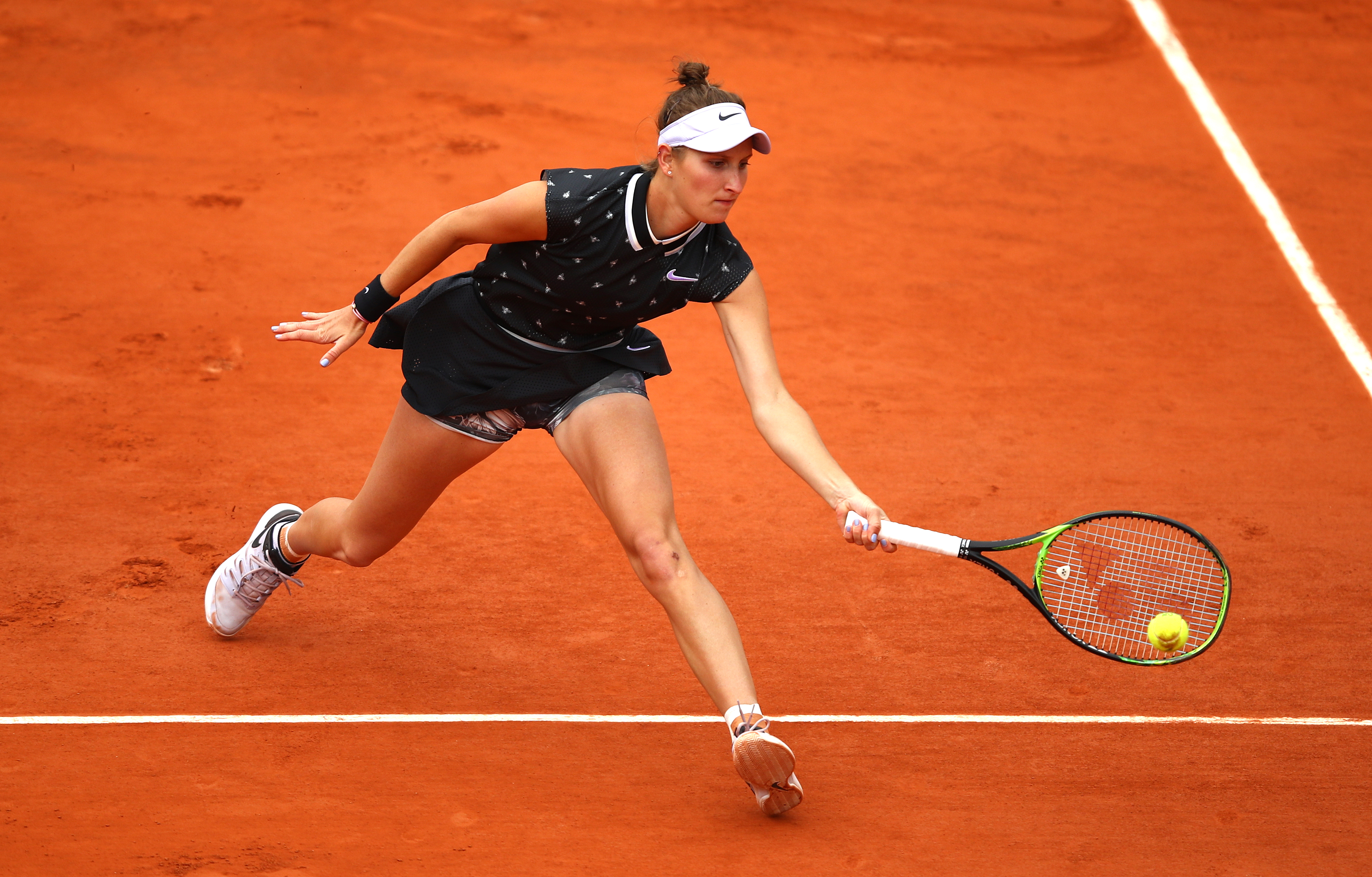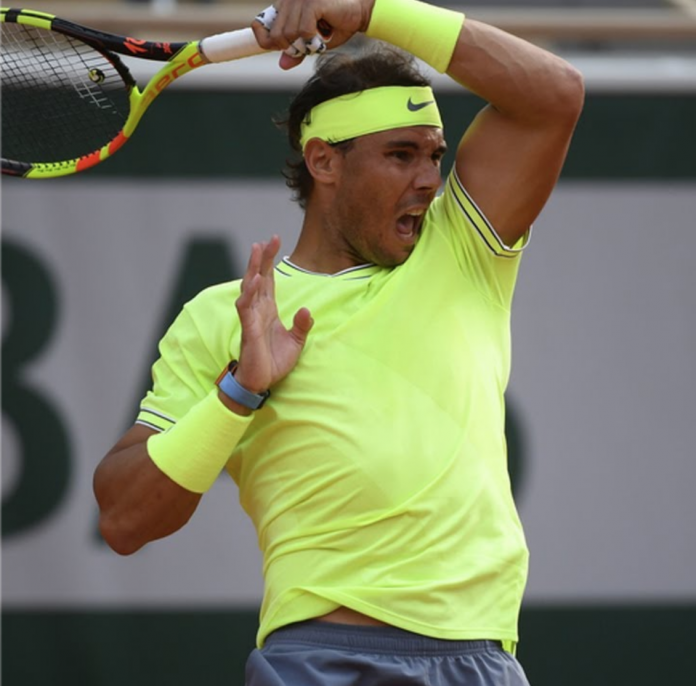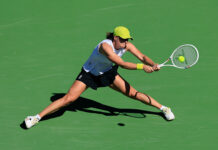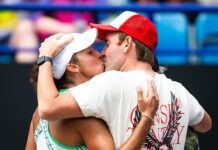Bill Simons
Paris
Behind its mighty doors, in its hidden courtyards, Paris holds inner truths. Its secrets are ancient. But there a few secrets in tennis. Going into today’s much anticipated Rafa vs. Roger semifinal, tennis fans and pundits alike embraced certain conventional wisdoms: Roger and Rafa are the best tandem in tennis history. Rafa is a sublime bull and to many, but not all, Roger’s the elegant GOAT. Beating Nadal at Roland Garros is the hardest thing to do in the sport. And luck does matter.
•••
In Indian forests, on catamarans on distant oceans and in living rooms everywhere, fans tuned in. Roger vs. Rafa deep into a Grand Slam is tennis’ gold standard. But the two titans hadn’t met here in eight years.
But now, as the moment came, a lone plastic bag swirled – so did Federer’s forehand. The gods seemed to be with Rafa. He broke out to a 3-0 lead. One wondered – could this be a blowout? After all, the King of Clay not only has won eleven French Opens, he’s never lost to Roger here and has never really been tested. Now, the balletic Roger was, of all things, off balance. He lunged. His money shots at times filed for bankruptcy. Philippe Chatrier Stadium seemed more like the Sahara than the most pristine court in the Bois de Boulogne.
Federer is a man of precision. He’s Swiss. He plans, then executes. A chaotic mix of wind, drizzle, dark clouds and even bright sunshine is not his thing.
You could almost hear himself asking, “How do I figure out this gusty wind? Can I go for my shots? Even my ball toss is an issue.” Roger has won 20 Slams, but today he seemed like a visitor who’d dropped by Rafa’s house. He had to be thinking, “After three years I decided to play the French. I knew the title goes through Nadal – now what do I do?”
But Roger’s a street fighting man. He held serve, then called on his aggression and experience to break, thanks to a ripper backhand. If there was any chance Roger could win, it would be because of his backhand, not in spite of it.
But Rafa is the best wind player in this universe. His defense astounds. His speed is a withering weapon. His forehand creates its own wind. With its mighty spin, he can place the ball in the court all day.
Roger thrives when he flows free. Today, he had to think, calculate and calibrate. And he did. Up a break in the second set, Federer was hoping to counterattack. He placed a fine forehand into the corner and thought he’d saved a break point. But Rafa ran it down, tossed it high into the air. Roger hit a meek overhead and the Mallorcan ripped it past the Swiss to bring the set back on serve.
Later Roger explained, “You get to a point where you’re just happy to make shots and not look ridiculous…There is no way to practice in these conditions…It’s all a mindset. It’s footwork…I don’t know what I could have done a whole lot different. Does the wind take my serve out of play a little bit?…With the toss being all over the place, you’ve got to go for safety…But I don’t think I played poorly…He’s the best clay-court player, so I can accept that. It’s not a problem.”
What is a problem for Rafa’s foes is that since he first came to Roland Garros, the man has been all but impossible to break down from the baseline. Mary Carillo used to say that the only way to beat Rafa was to hit every shot on the lines. Even Federer can’t do that. Roger used to scoff at drop shots – he called them bail out shots. Still, he called on them repeatedly today. But against Rafa with his fleet feet, well-honed instincts and quick hands, Federer’s net charges had a helter-skelter sensibility. Appropriately enough, Nadal captured the second set 6-4 when he again prevailed in an eyeball-to-eyeball scramble at the net.
By now Nadal’s many punches had taken their toll. As Federer muffed two more third-set forehands, his focus, concentration, and belief wavered. Even net chords fell Nadal’s way. And the oh-so-cool Roger bashed a ball high into the stands. French fans were not pleased.
But few were surprised that Nadal had an answer at every turn. Rafa is a wall, but one that bites. His defense is a wonder. His forehand is fabled, but today his flash, lean-in crosscourt backhand was an enforcer. He won 6-3, 6-4, 6-2 in a tidy 2:25. As chilled fans left, they wondered whether they would ever again see Roger play here. Federer wouldn’t guarantee that he’d return.
Nadal almost certainly would have won on a hot, dry, still day. But the winds helped the Spaniard. He now has a dominant 24-15 record over Federer and if he gains his 18th Slam on Sunday, it’s no secret that the bull’s charge at the GOAT will only gain momentum.
WOMEN’S SEMIFINALS
Douglas Hochmuth
Paris
Wonder teen Amanda Anisimova was playing her first Grand Slam semi, and at first, the moment got to her. “I was kind of frozen,” she said in her presser. On the windswept Court Suzanne Lenglen, the Floridian managed just three points as Ash Barty sprinted to a 5-0 lead. But then, the 17-year-old showed the same poise that helped her bring down defending champ Simona Halep, and stormed back – taking the first set in a tiebreak.
She continued and was up 3-0 in the second set. But the rain drizzled and Amanda fizzled. “She just outplayed me,” said the American, whose big weapons were muted by the weather. A first Slam final was on the line for both women, but the Aussie Barty is through, with a 6-7, 6-3, 6-3 victory.

Out on Court Simonne Mathieu, Britain’s heady Jo Konta was in control of her semifinal against the Czech Marketa Vondrousova. She led 5-3 and at set point, Vondrousova looped a ball short that the Brit scrambled to take out of the air. “I took the opportunity to come in,” she said, “That’s what I would do nine times out of ten, and nine times out of ten it probably would go in.” Today it didn’t. From there, her 19-year-old opponent stepped up to take the first set 7-5. The Czech lost serve early in the second, but again broke as Konta served for the set. In the tiebreak, the crafty Vondrousova sealed her 7-5, 7-6 victory with one of her adept dropshots. The youngest finalist in 12 years, she will now face Barty in the final.



















